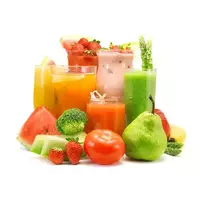Fruit nectars

Fruit nectars are a liquid food that is obtained by mixing various types of fruit juices or puree with water. It is worth noting that many modern fruit nectars are not much different in taste from juices. According to the terminology used in the food industry, fruit nectars are classified as juice-containing products.
Composition of Nectar
The composition of nectars, as a rule, in addition to fruit juice or puree contains sugar, honey or other sweeteners, as well as various sugar substitutes. In addition, various food additives can be present in the nectar composition, which determine the taste as well as consumer characteristics of the finished product. Currently, there are two main varieties of fruit nectar - clarified and undeveloped.
In addition, fruit nectars with pulp are distinguished into a separate group, which, as a rule, are made on the basis of fruit puree. Among the main types of nectar can be distinguished:
fruit nectars;
vegetable nectars;
fruit and berry nectars;
fruit and vegetable nectars.
It is noteworthy that all types of nectar are made by mixing fruit, fruit, and besides vegetable juices and puree with water. For the manufacture of nectar, both fresh fruits and frozen products are used. Apricots, plums, pears and peaches are best suited for making nectar. Often, various fruit or vegetable concentrates are present in the nectar.
Most often, vegetables such as beets, carrots and pumpkins are used in the process of making nectar. In addition, nectars are produced on the basis of juices and puree from melon, watermelon, lingonberry, grapes, lemon, sea buckthorn, tomatoes and other vegetables, berries and fruits. The quality, taste, as well as consumer characteristics of nectar depend solely on the raw materials, as well as the method of manufacturing the product.
It is noteworthy that the technology for the production of nectar was not developed by chance. The thing is that not all popular fruits can get juice, for example, maracuas, bananas or mangoes. Nectar technology enables food manufacturers to produce a juice-containing product made from banana or mango puree.
In addition, nectars produce their concentrated juice of those vegetables, fruits and berries that have too strong an acidic or sweet taste, for example currants, cherries or pomegranates. It is worth noting that for various types of nectar, certain frames for the content of fruit juice or puree in the product are established. In accordance with the standards established for drinks, nectar must contain at least 20% and no more than 50% juice or puree.
48 kCal fruit nectar
Energy value of fruit nectars (Ratio of proteins, fats, carbohydrates - ju):
Proteins: 0.4 g (~ 2 kCal)
Fats: 0.1 g (~ 1 kCal)
Carbohydrates: 12g (~ 48kCal)
Energy ratio (bj | y): 3% | 2% | 100%
 Español
Español Français
Français Português
Português Русский
Русский 简体中文
简体中文 繁體中文
繁體中文 日本語
日本語 한국어
한국어 العربية
العربية Türkçe
Türkçe Қазақ
Қазақ Deutsch
Deutsch Italiano
Italiano Українська
Українська
